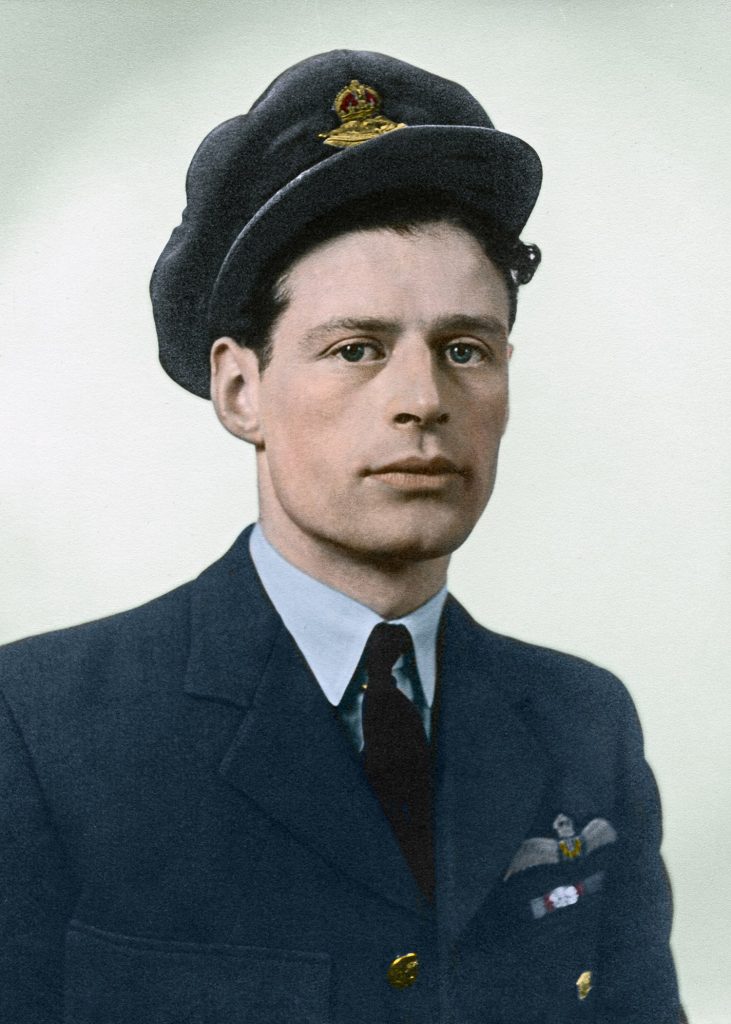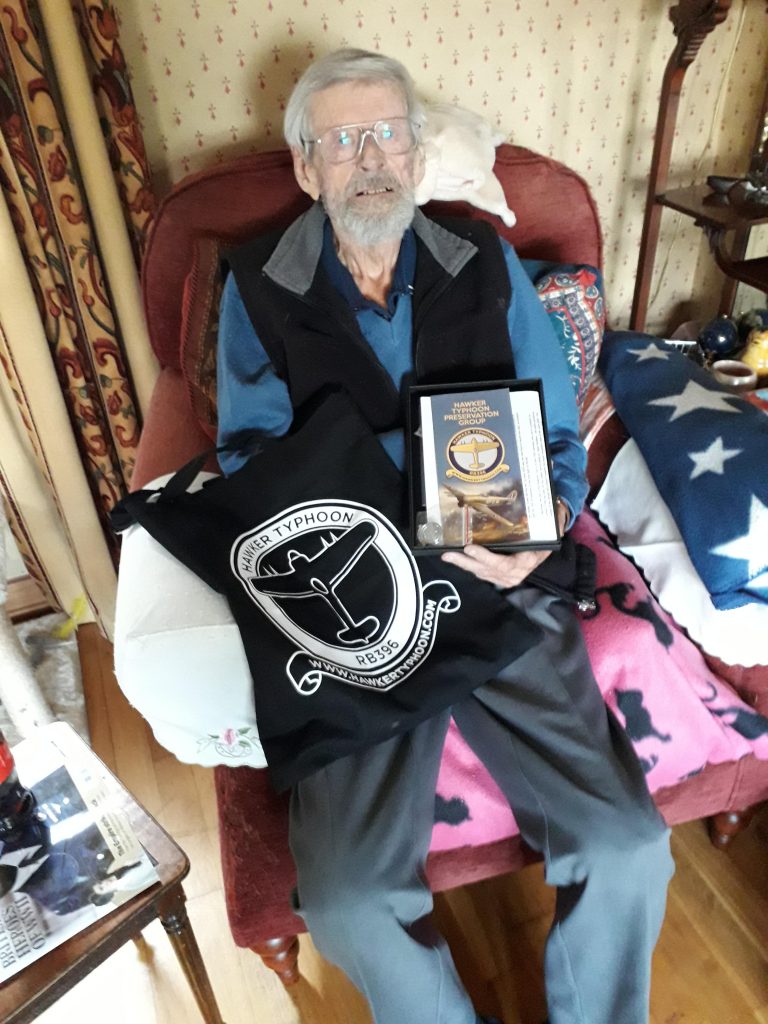It is with deep sadness we report that Flying Officer John ‘Paddy’ Byrne passed away on the 16th of November 2020. John was a Typhoon pilot serving with 197 Squadron for 15 months and had flown over 150 operational sorties. These operations included the lead up to D-Day, the Normandy campaign including the Falaise Gap, operations over Belgium, Holland and Germany. Later John was posted to the Far East ferrying aircraft operating out of India. His final flight before returning to the UK involved the forced landing of a Spitfire with undercarriage failure.
John was originally an Aircraft Apprentice having joined the RAF in 1938 and trained at RAF Halton as part of A Sqn, No.1 Wing, 38th Entry. After a stint on 224 Squadron at RAF Leuchars, changing engines on RAF Hudsons, John wanted to retrain as a pilot. He successfully passed the Aircrew Selection Board (ACSB) for pilot training and went back to his squadron to await news of his posting to flying training. In the meanwhile, John was posted to 254 Squadron in Northern Ireland, equipped with Bristol Blenheims subsequently being told to travel to the Aircrew Reception Centre at Lords Cricket Ground where he would re-muster as aircrew.

In January 1942, John found himself at No. 3 British Flying Training School in Miami, Oklahoma. It was here that John learnt to fly and his training included time on the AT-6a Texan (known as the Harvard in the UK). After returning to the UK John completed operational and tactical training flying Hurricanes before being posted to 197 Squadron RAF, who at the time were based at RAF Tangmere, West Sussex.
He was with 197 Squadron from April 1944 till June 1945 and started out on the Squadron with convoy patrols and remaining at operational readiness to scramble against ‘tip and run raiders. The Squadron became part of 2nd Tactical Air Force (TAF) and moved to RAF Needs Oar Point in the New Forest in April 1944. Here they became accustomed to a lower standard of living with tented accommodation, buckets of cold water for washing and ration packs. During this period, John met his wife of some 67 years, Leading Wren Patricia Mary Forster.
Operations against the enemy were frequent and in the lead up to D-Day the Squadron was immensely busy. 197 Squadron were equipped with bombs rather than rockets and so carried out many low-level and dive-bombing sorties against Noball V-1 sites, radar stations, railways, army barracks, airfields and generally anything they could get their hands on. It was a dangerous job. To quote ‘the German gunners were the best in the world and on every sortie aircraft were damaged. We lost on average one or two pilots a week.’ On one sortie John, with his hydraulics shot away by flak, force landed at Beaulieu.

John flew on operations on the 6th June 1944, D-Day, and said ‘the scene was one to remember with the Channel full of ships – the battleships, cruisers and destroyers bombarding the French coast and targets inland, rocket ships pounding the beachhead, shells exploding, houses burning, landing craft shot-up on the beaches.’ After D-Day the Squadron was moved to B3, an airfield in Normandy that was even more basic than Needs Oar Point. Much of the aircraft maintenance was carried out in the open air, often under threat of shellfire and air attack, by Servicing Commandos of the RAF.
After the Normandy campaign, 197 Squadron found its way to Deurne airfield (B70) outside Antwerp in Belgium where operations against the Germans continued. With the German retreat towards Eastern Holland and Germany, bridges were attacked to slow them down. Occasionally the airfield came under attack by V1 & V2 rockets that were destined for Antwerp. Into the New Year, preparations were made for the assault on Germany and the Rhine crossing (Operation Veritable). Anti-aircraft fire was heavier in Germany and similar to that which had been encountered in Normandy so losses started to mount and replacements couldn’t catch up. The final operation was to attack shipping in the Baltic and on the 3rd May 1945, where they sank the SS Deutschland, a 22000-ton liner.
John had flown intensively with 197 Squadron throughout 1944 – 1945 and had two 48 day passes and one 7-day block of leave. John was the only pilot to serve continuously with the Squadron, without a break, throughout the campaign. He had been stationed on 14 different airfields with 197 Squadron from the UK through France, Belgium, Holland and Germany. During this time the Squadron suffered a 50% loss rate amongst its pilots.
It is through the restoration of Hawker Typhoon MkIB RB396 we commemorate all of those that served in flying, building, servicing and delivering Hawker Typhoons. Those that flew the Typhoon on operations had a tough time and losses were very high due to the dangers that they were exposed to. In September 2020 John’s son, Lance Byrne, gifted a Platinum Club membership to his father. Knowing that his health was failing and that contribution will go directly into restoring the aircraft type that John flew, it was important for Lance to see his father’s legacy remembered

In accordance with his Platinum Club membership Flying Officer John Byrne will have his name etched into the metal of RB396 and remembered on a plaque as a lasting tribute that will permeate through the ages in the truest meaning of the intention of the Platinum Club.
We thank John for his service and his support for the rebuild of RB396. Our thoughts are with his friends and family at this time.
Lest we forget.
